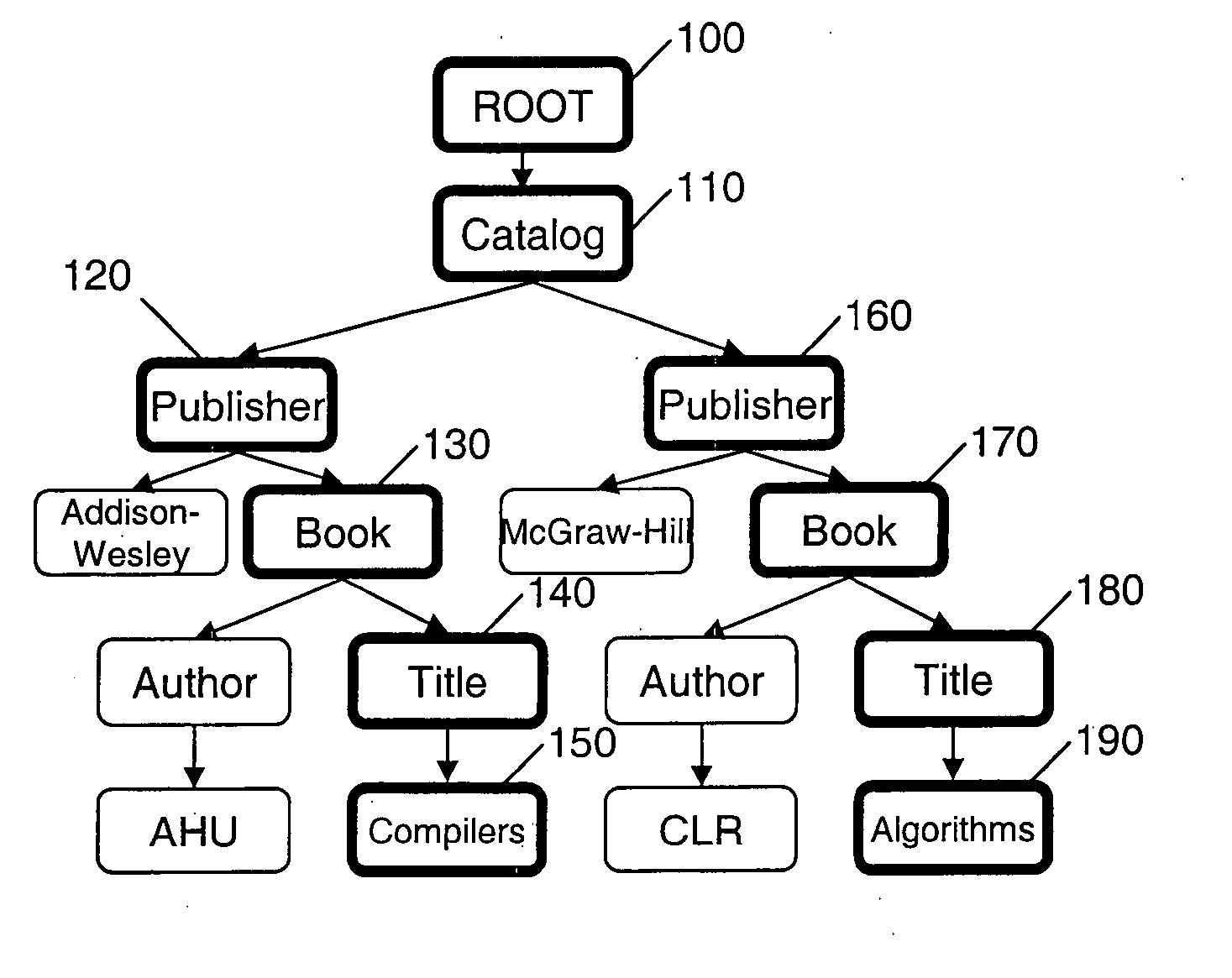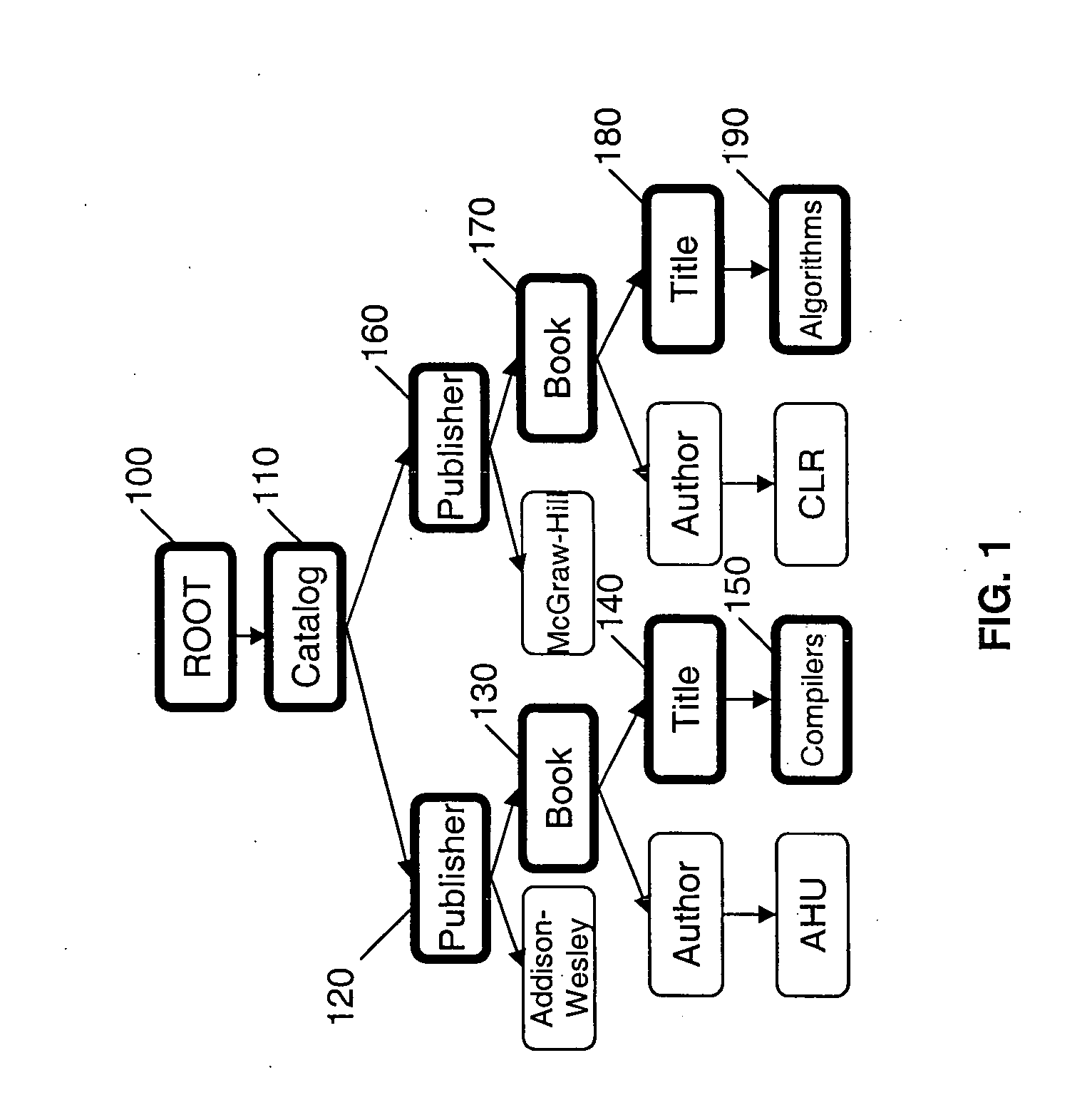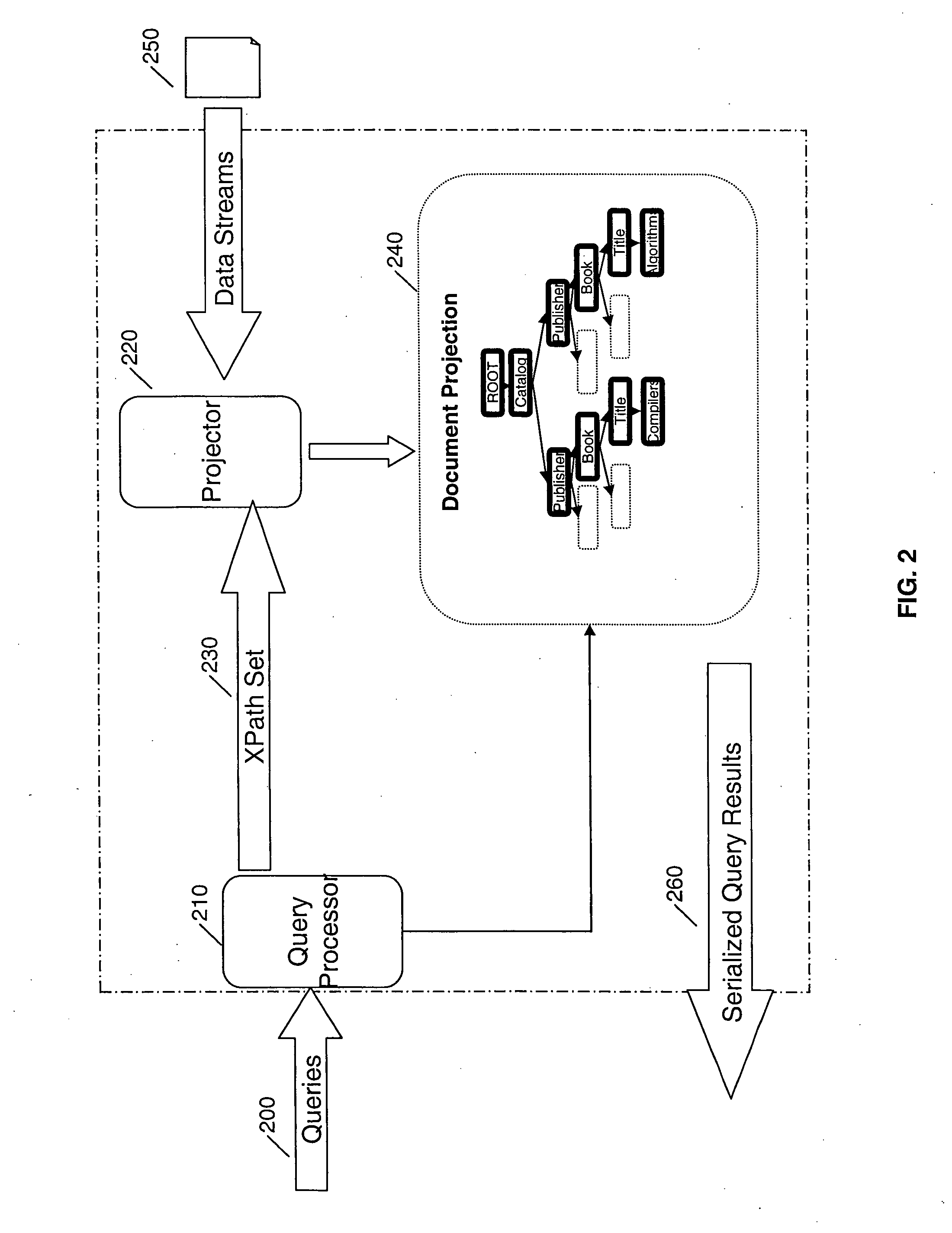Method and apparatus for approximate projection of XML documents
a technology of xml documents and projection methods, applied in the field of information handling systems, can solve the problems of inability of xml processors to handle large documents, prohibitively expensive time and memory, and inability to construct tree representations,
- Summary
- Abstract
- Description
- Claims
- Application Information
AI Technical Summary
Problems solved by technology
Method used
Image
Examples
Embodiment Construction
[0018] We describe a method, computer readable medium, and information processing system for projecting a representation of a document in the XML format based on a set of XPath expressions, where the XPath expressions may involve use of both forward and backward axes.
Tree Model of XML Documents.
[0019] An XML document may be represented as a tree whose nodes represent the structural components of the document—elements, text, attributes, and the like. Parent-child edges in the tree represent the inclusion of the child component in its parent element, where the scope of an element is bounded by its start and end tags. The tree corresponding to an XML document is rooted at a virtual element, root, which contains the document element. A system according to an embodiment uses XML documents in terms of their tree representation; we will use “D” to denote an XML document, and ND and ED denote its nodes and edges respectively. For simplicity, the description focuses on XML elements, thoug...
PUM
 Login to View More
Login to View More Abstract
Description
Claims
Application Information
 Login to View More
Login to View More - R&D
- Intellectual Property
- Life Sciences
- Materials
- Tech Scout
- Unparalleled Data Quality
- Higher Quality Content
- 60% Fewer Hallucinations
Browse by: Latest US Patents, China's latest patents, Technical Efficacy Thesaurus, Application Domain, Technology Topic, Popular Technical Reports.
© 2025 PatSnap. All rights reserved.Legal|Privacy policy|Modern Slavery Act Transparency Statement|Sitemap|About US| Contact US: help@patsnap.com



